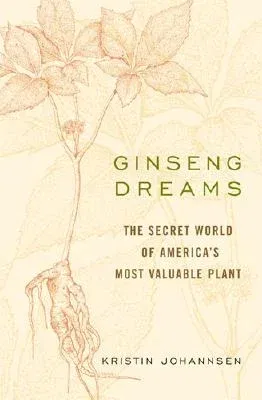American Ginseng has a strange and perilous history. It has one of the
longest germination periods of any known species, and only two
environments in the world have offered the ideal growing conditions for
wild ginseng. The first was the forests of northern China, which
disappeared over a millennium ago, and the sole remaining habitat is the
Appalachian Mountain region of eastern North America, an area now
threatened by logging and mining. Chinese legend says that ginseng is
the child of lightning. The two elemental forces of water and fire fight
in an eternal struggle, pouring down rain and snow and blasting the
earth with lightning. If that lightning happens to strike a spring of
water, the water disappears and in its place grows a ginseng plant --
the fusion of yin and yang, water and fire, darkness and light, and the
life force that moves the universe. American ginseng has become perhaps
the most treasured of all herbal medicines, promising good health and
longevity to those who consume it. Fortunes have been made and lost on
the plant, which was America's first export to China -- before our
nation even existed. The strange, twisted, man-shaped root today
commands as much as two thousand dollars a pound in the hot, noisy
ginseng markets of Hong Kong, and a wealthy collector might pay as much
as $10,000 for a single, perfect specimen. Ginseng Dreams: The Secret
World of America's Most Valuable Plant unfolds ginseng's past and its
future through the stories of seven people whose lives have become
inextricably bound to it: a huckster, a field researcher, a farmer, a
ginseng "missionary," a criminal investigator, a broker, and a cancer
researcher. Each of these individuals brings a different perspective to
the elusive root -- and each is consumed by a different dream. Kristin
Johannsen threads her way though remote woodlands in the Appalachians to
observe the fragile plants slowly putting out leaves as part of a
three-year growing cycle, during which time the ginseng is vulnerable to
both poachers and growing suburban sprawl. She contrasts this with the
huge commercial growing fields of Marathon County, Wisconsin, where
among potato fields and paper mills, ninety percent of the country's
ginseng is produced. Johannsen explores the brisk black market trade in
the panacean root and the efforts to save the wild species and its
native habitat, and she ends her story in the laboratory, where
researchers are investigating ginseng's anti-cancer properties. An
absorbing journey into the many worlds of this mysterious and potent
plant, Ginseng Dreams tells the extraordinary story of America's
little-known natural treasure and the spell it casts on those who seek
it.

